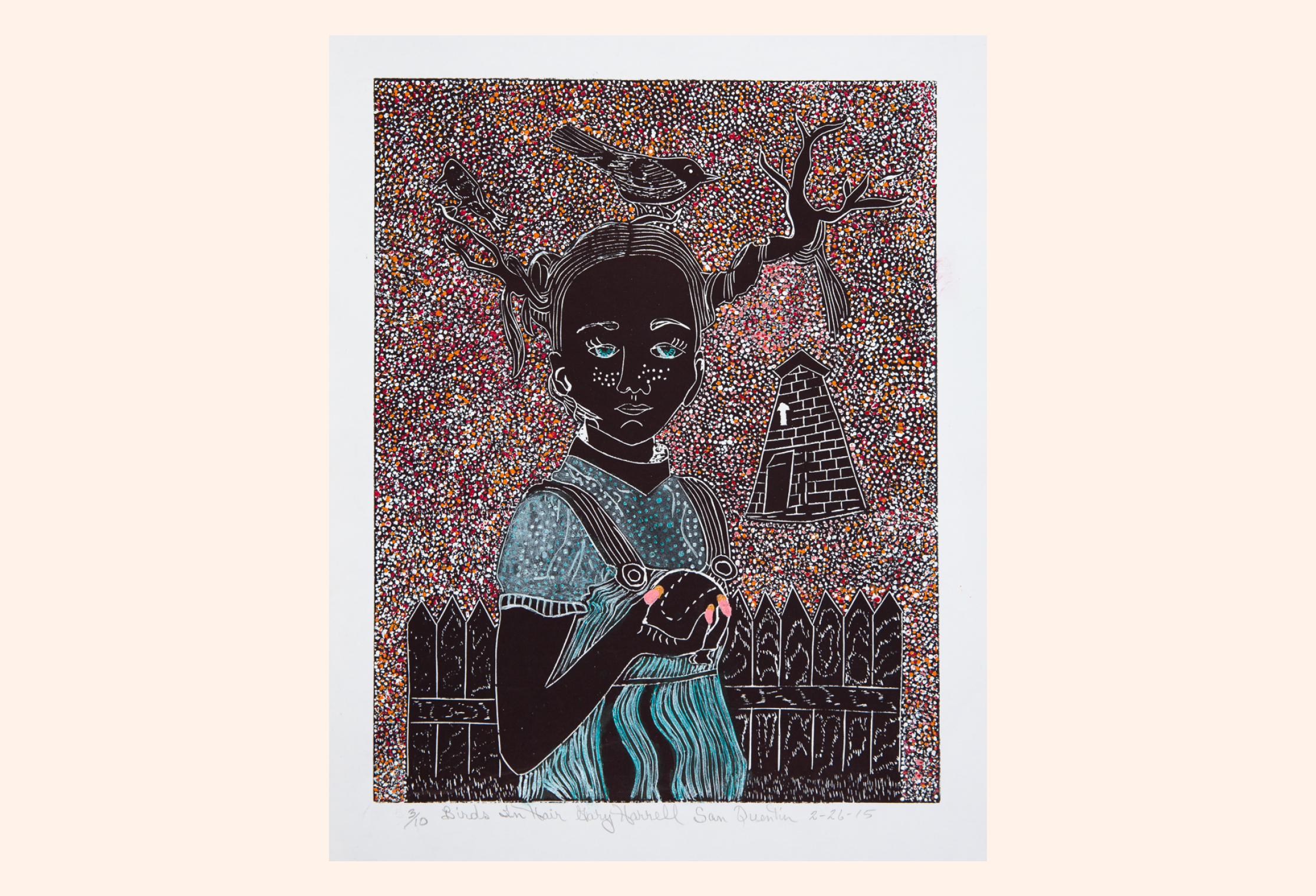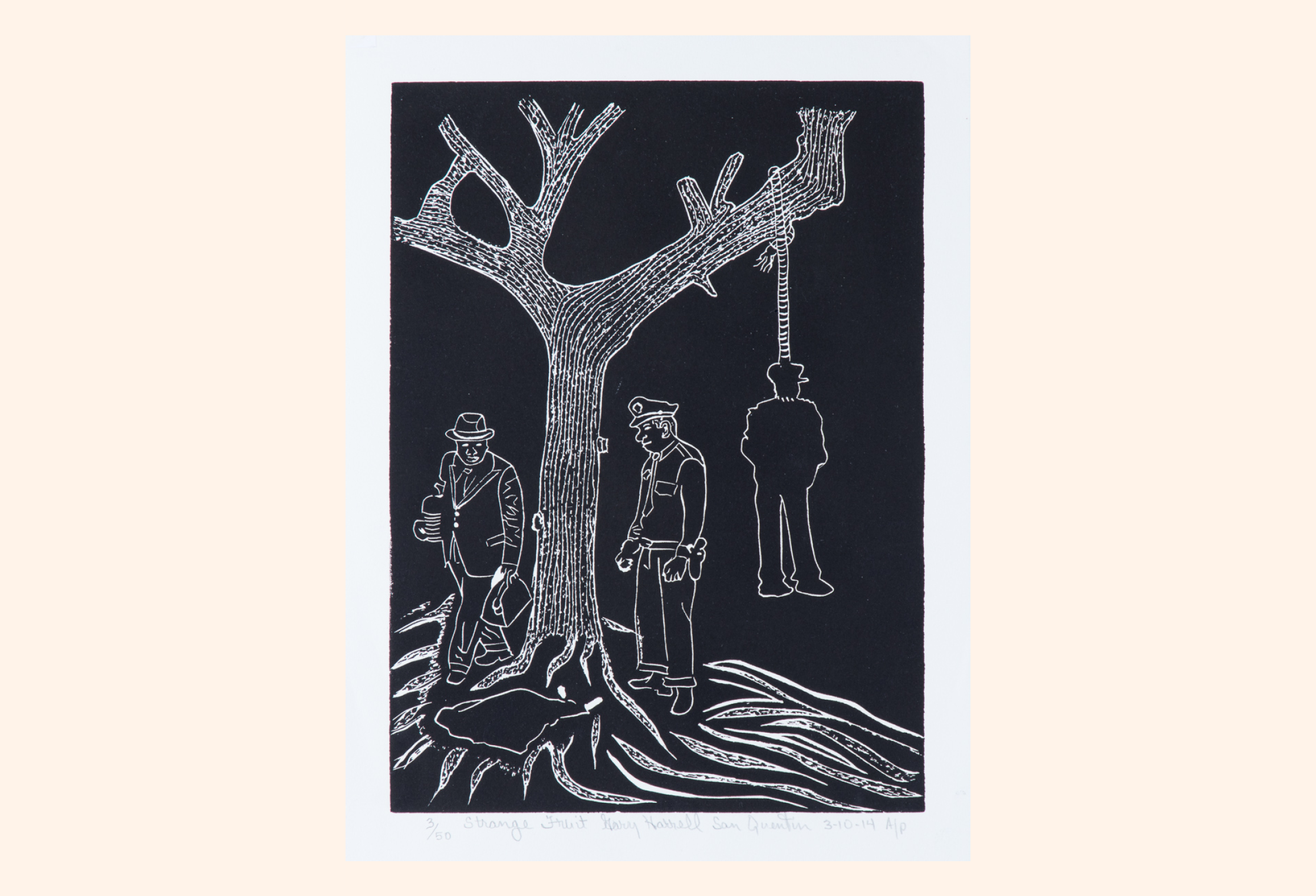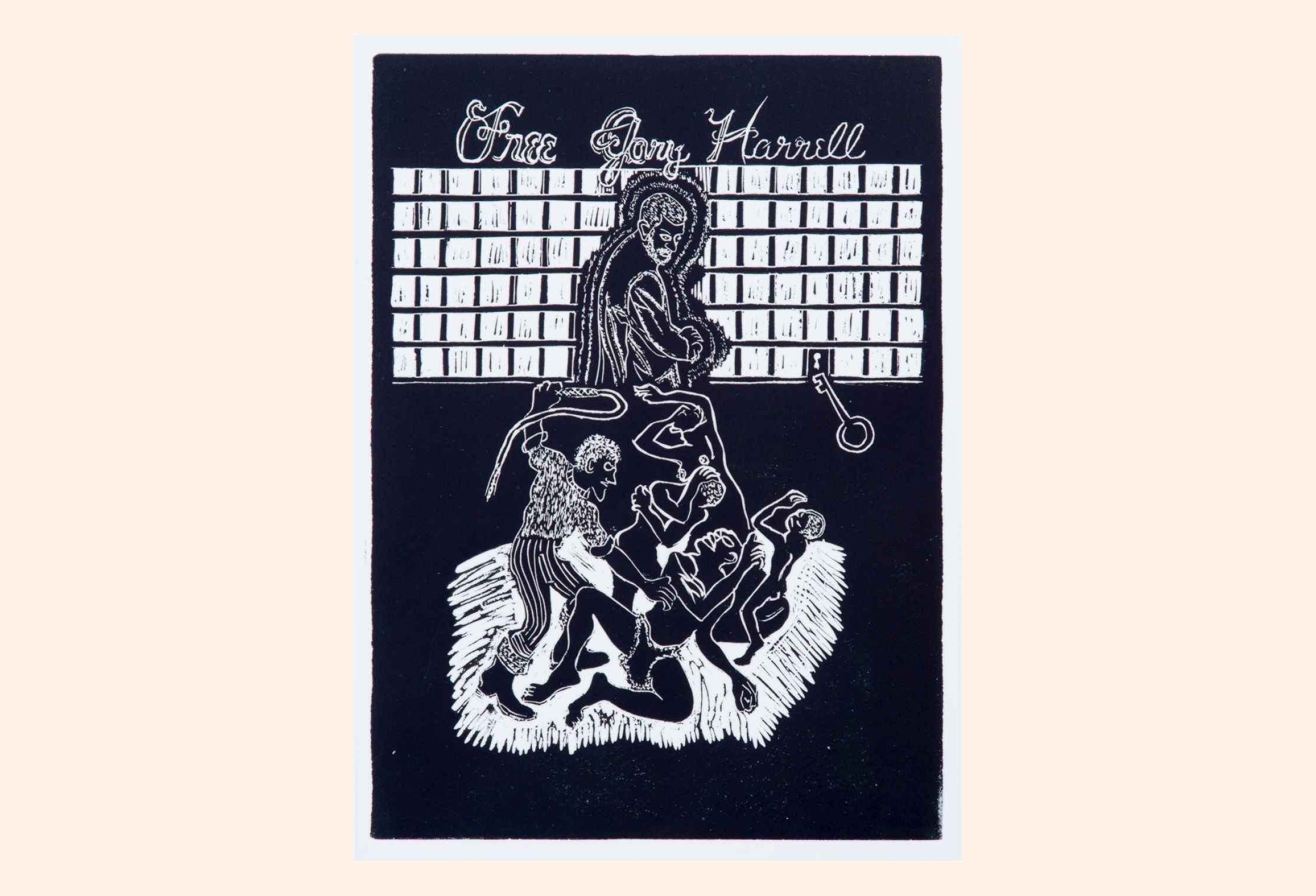Gary Harrell is an artist, entrepreneur, craftsman, and a harmonica blues musician. He was born in Spring Hill, Louisiana, and was raised in Orange County, California. He now resides in Sacramento, California with his wife.
Harrell began his practice in 1985 through the Arts in Corrections program at San Quentin Prison. Beginning with woodwork and molding glass and plastic, he later expanded into new media such as block prints and advanced techniques using pointillism. Harrell’s work has been included in several exhibitions, including Marking Time: Art in the Age of Mass Incarceration, at MoMA PS1; and Meet Us Quickly: Painting for Justice from Prison, at the Museum of the African Diaspora. His work has been shown at venues including the University of Derby, England; Yerba Buena Center for the Arts, San Francisco; Art in Action Gallery, Flagstaff; Cooper Hewitt Museum, Smithsonian, New York; and Kala Art Institute, Berkeley, and has been featured in The Washington Post, among other publications.



